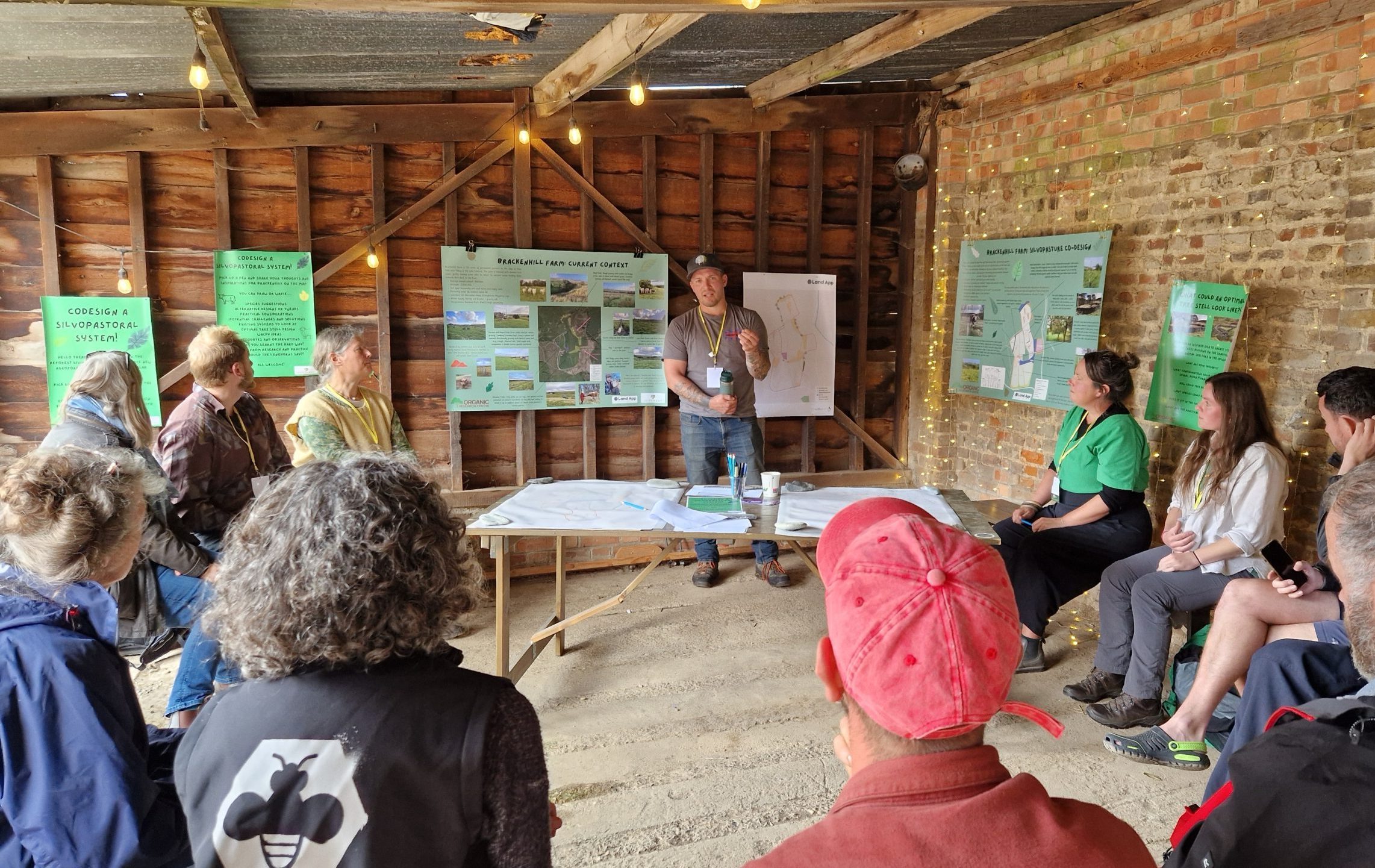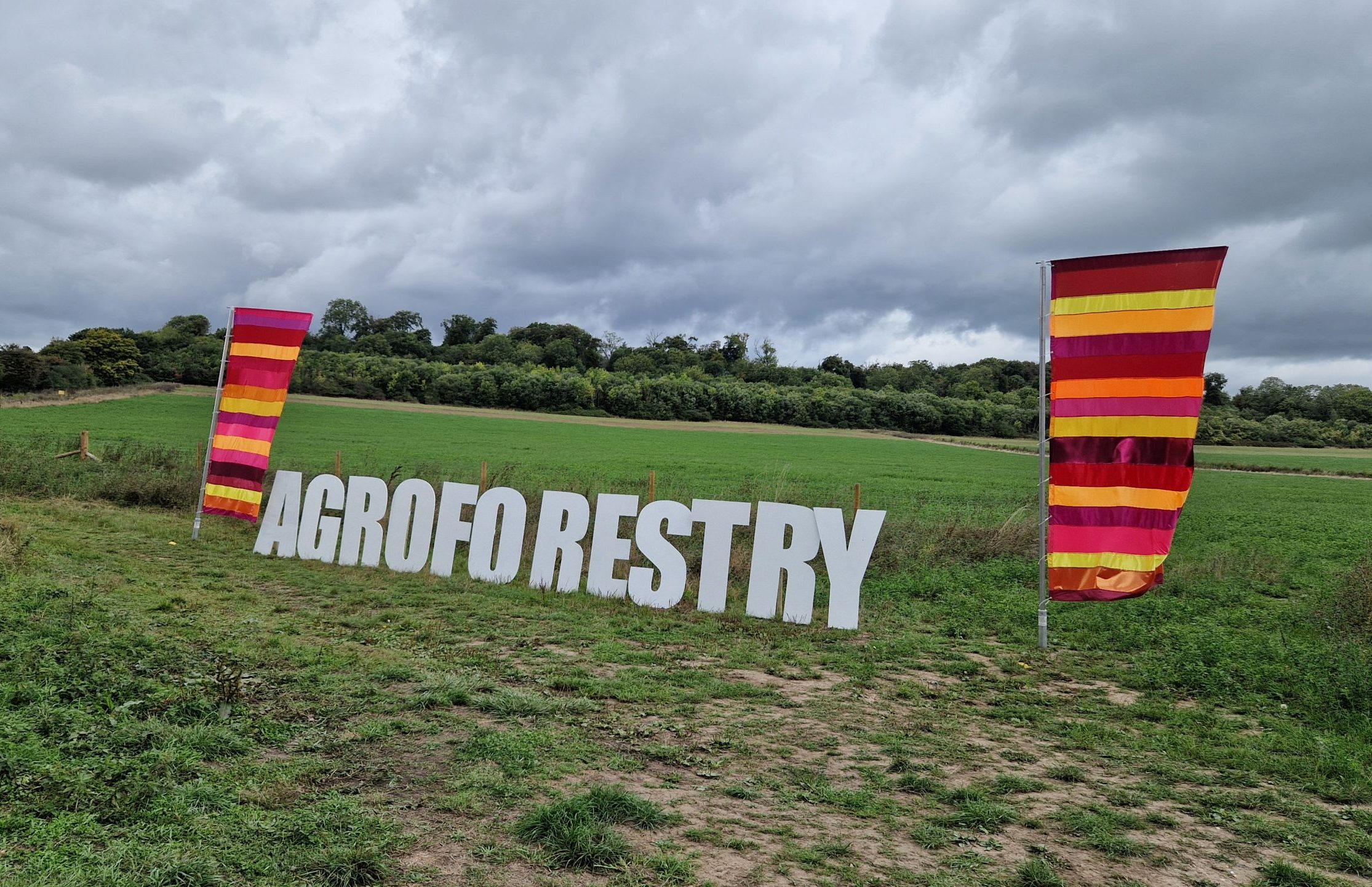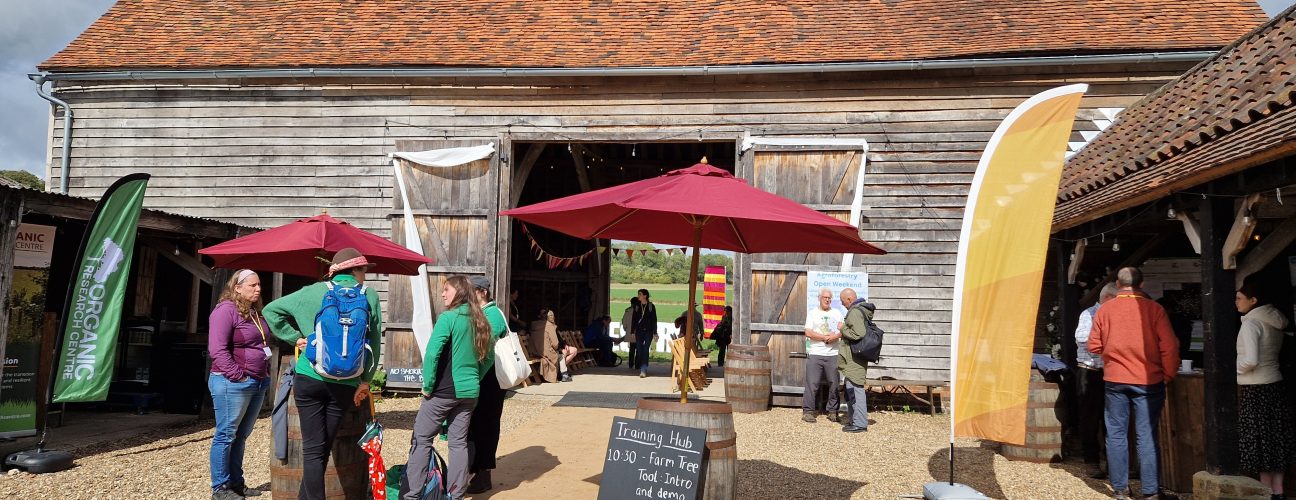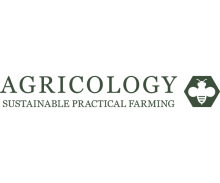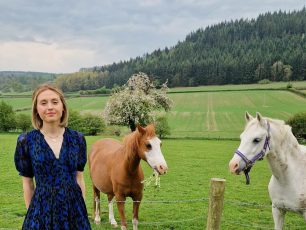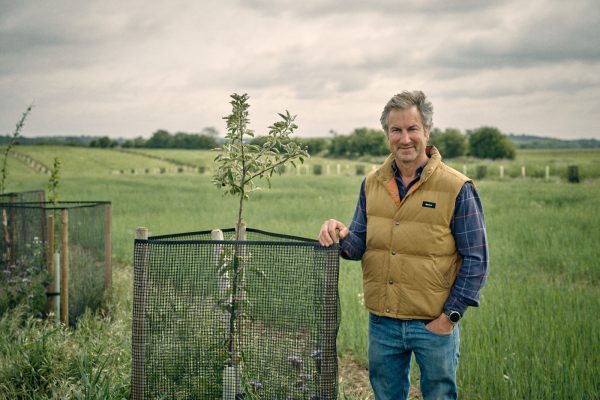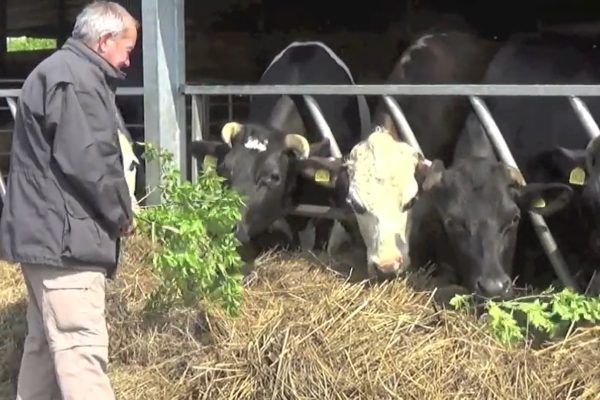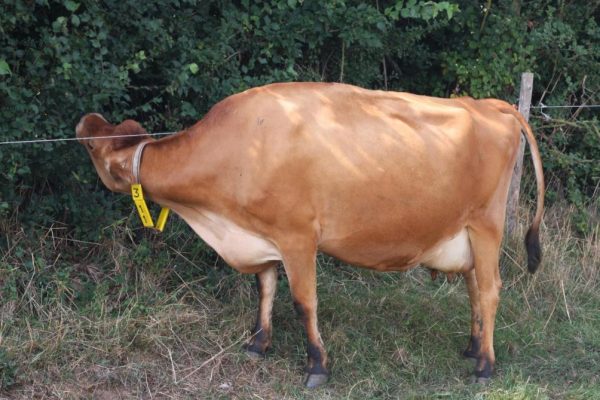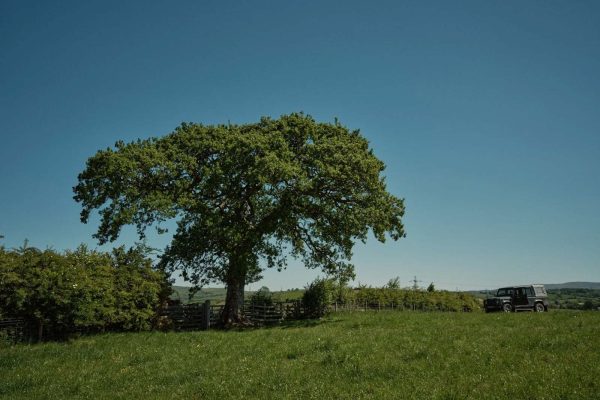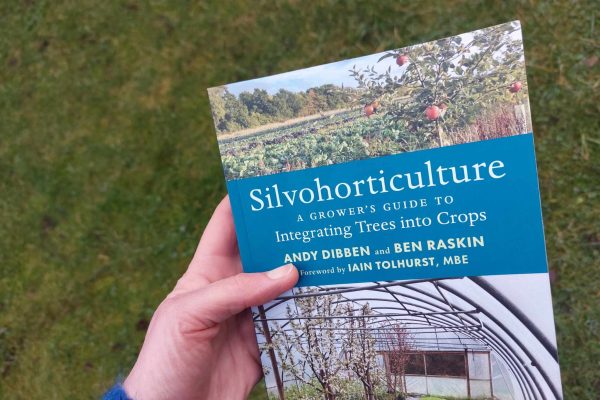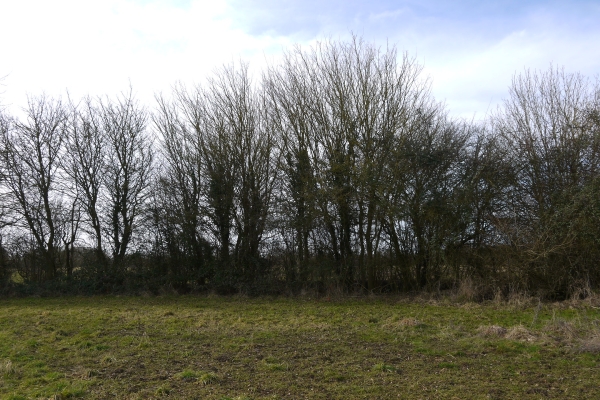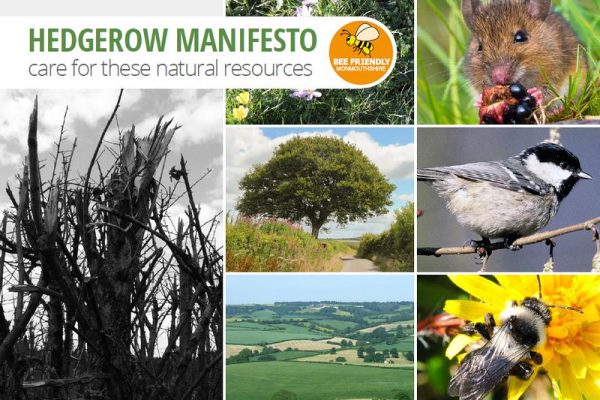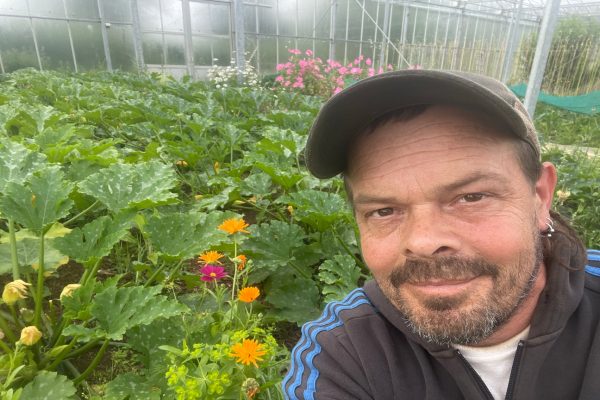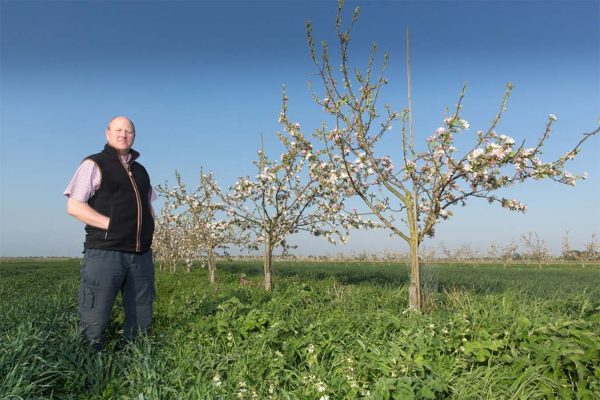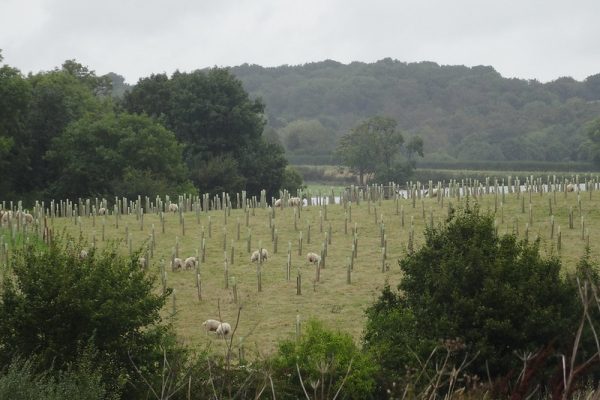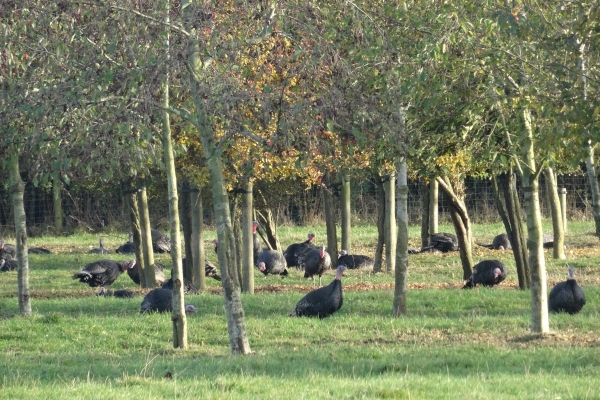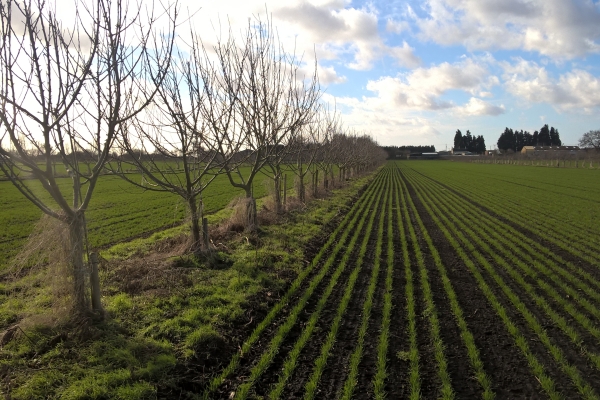Agroforestry Takes Centre Stage in Conversations Surrounding the Future of Farming
The beginning of September saw the much-anticipated Agroforestry Show return for the second time. Run in partnership between the Soil Association and the Woodland Trust, the show aims to bring agroforestry into the mainstream of public dialogue and highlight its potential for mitigating the effects of climate change, bolstering resilience, diversifying farm income and boosting both soil health, livestock wellbeing and biodiversity.
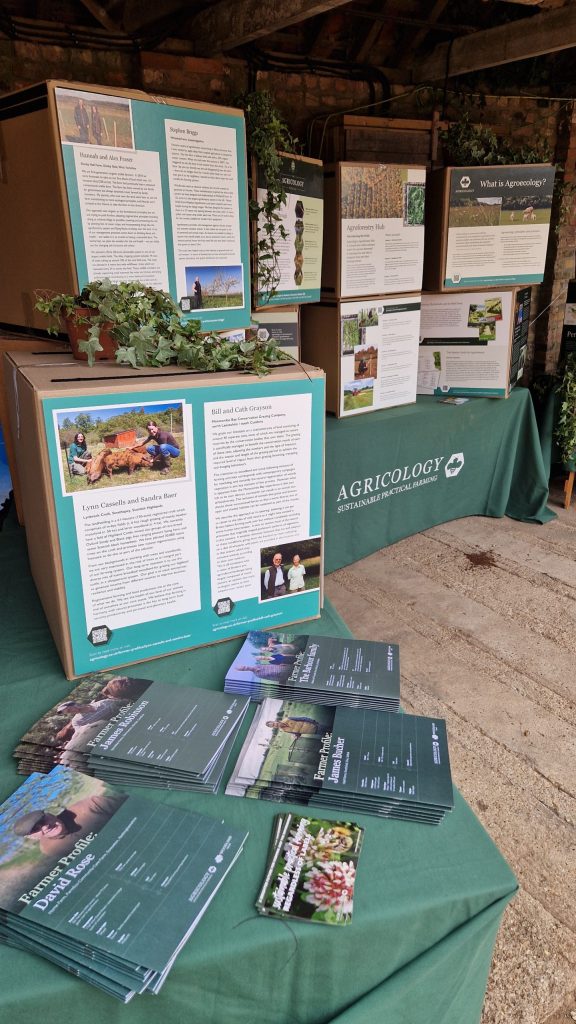
The venue
This year’s event was held at Woodoaks Farm in Hertfordshire. The site was donated to the Soil Association Land Trust in 2020 and is currently transitioning to becoming a fully organic, regenerative farming system and vibrant community food hub. It extends to just over 300 acres and includes arable, pastureland, and around 75 acres of semi-natural woodland.
Team Agricology were excited to be involved in a new addition to the show – the Training Hub – a unique learning space which we co-ordinated in partnership with the Organic Research Centre (ORC), ReForest, DigitAF and Cranfield University. Located around the beautifully restored Black Barn, the Hub hosted 14 high-impact sessions alongside an array of hands-on workshops, digital tool demonstrations and stand displays. The Agricology stand provided the perfect platform to showcase some of the resources from our new ‘Agroforestry Hub’ that we launched to coincide with the show.
Addressing global challenges with grounded solutions
The weather that attendees had to grapple with over the course of the two days was as diverse and varied as the sessions themselves, with torrential rain, gale-force wind and bright sunshine all making an appearance! However, wet conditions did not dampen spirits, and Wednesday began with a strong air of optimism and excitement. At the opening plenary session Tom Curtis, outgoing chair of the Soil Association Land Trust, warmly welcomed everyone to Woodoaks Farm. He set the tone for the Show by explaining how agroforestry is becoming increasingly relevant in today’s geopolitical and ecological climate, claiming that, in the midst of climate and trade crises, we need our land to support life within the country more than ever! Tom stressed the urgent need to advocate for farming practices which support diversity and resilience in the face of the considerable challenges we face as a global population.
This was a theme that weaved throughout all aspects of the Show programme, with many speakers emphasising how agroforestry – an age-old land management practice – is becoming ever more relevant in the 21st century. Closing the plenary, Tom pointed to the rich line-up of sessions ahead and encouraged everyone to “tuck in and enjoy!” and there was certainly plenty to tuck in to…
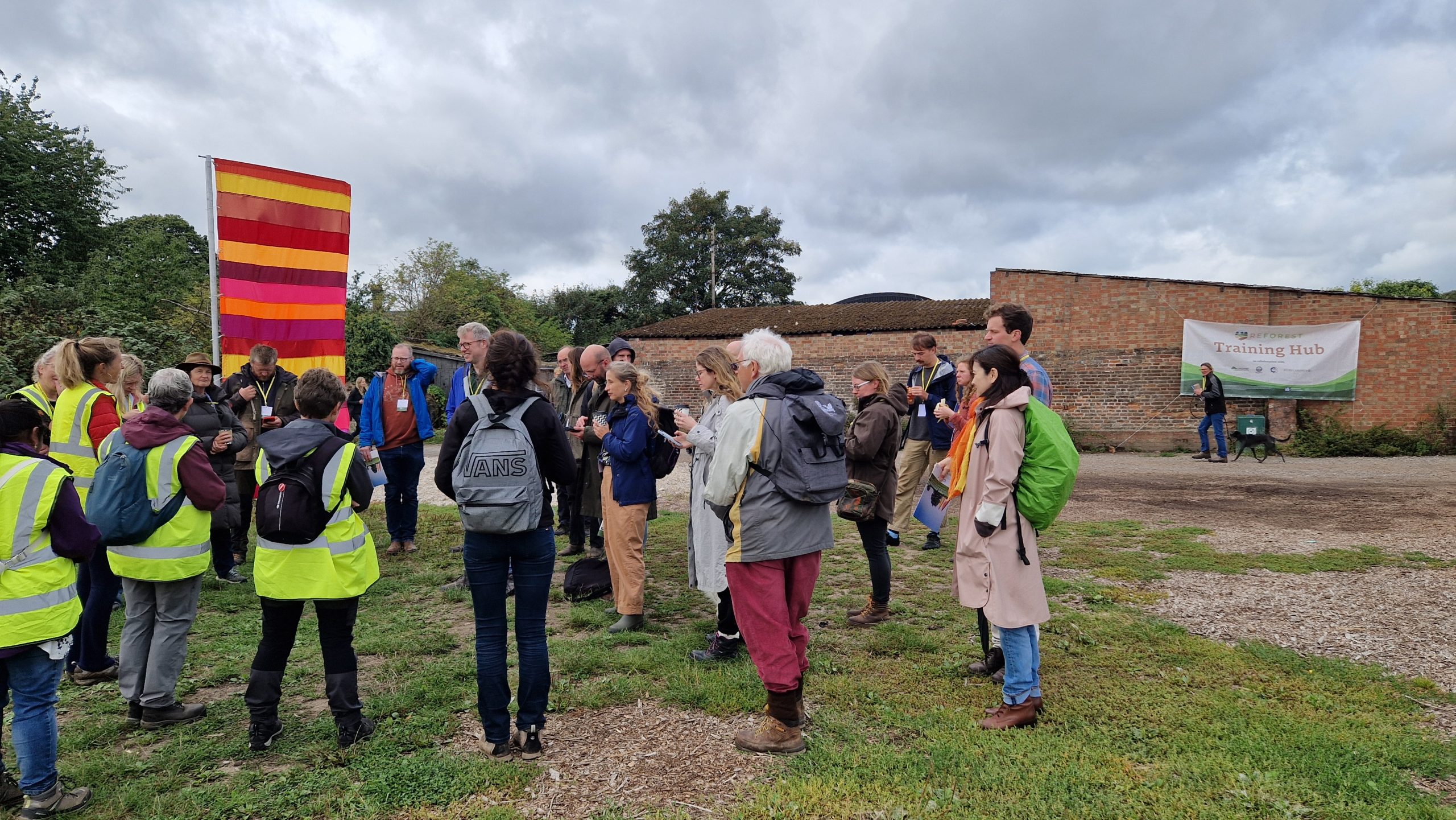
Practical insights: From silvoarable to silvopasture
At the Training Hub the programme kicked off with a session titled: An Introduction to Silvoarable, in which Stephen Briggs emphasised the importance of planning before planting, particularly around routes to market and sales strategies for agroforestry products:
“Before you put the first spade in the ground, you need to think about your intended outputs! What do you want to produce?”
He also spoke about the need for adaptive management, reminding us that:
“Trees are like children. Their needs are different when they are toddlers to when they are teenagers.”
Another very well attended session was Agricology’s Matt Smee hosting a conversation with Dr Lindsay Whistance from ORC on the ever-popular topic of tree fodder. Lindsay reminded us that the principal of silvopasture is simply “putting things back into the landscape that allow animals to function naturally in these spaces.”
During this informative discussion, the importance of palatability was highlighted as a key factor to consider when planting trees and hedges for browse. We learnt that species such as aspen, willow, elder and ash are among the most favoured, while alder, spruce, juniper and rhododendron are less so. Lindsay encouraged us to think of trees as vegetables and herbs, with all species offering nutrients in different amounts.
The session also covered the importance of plant secondary metabolites, which underpin the unique nutritional and health benefits that tree hay offers over conventional silage. Goat willow, for example, is rich in zinc, while condensed tannins in some species improve protein quality for ruminants and even help reduce internal parasites by binding to their eggs. We have been working with Lindsay on our new technical guide on tree fodder, due to be published soon, keep an eye out!
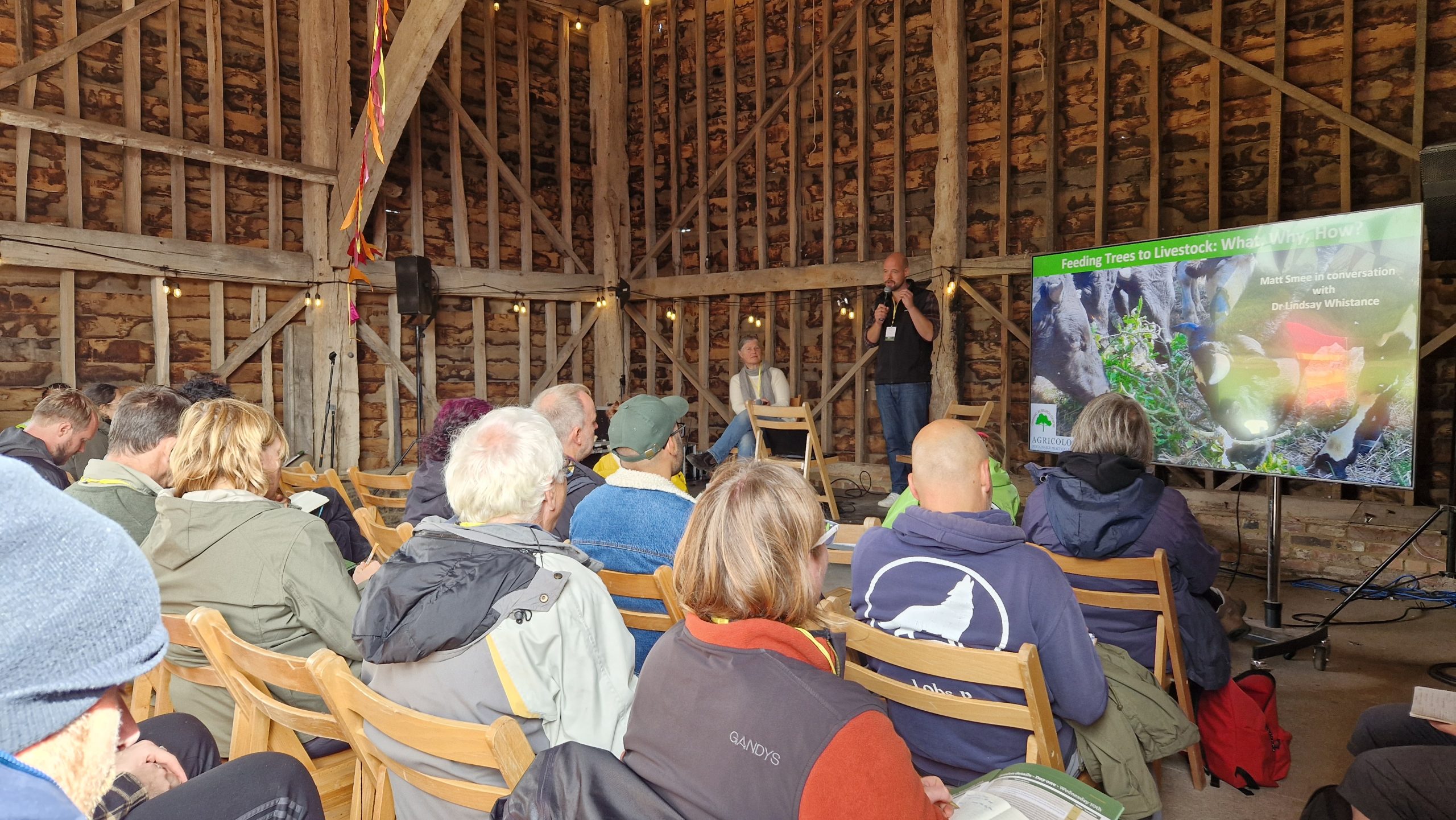
Embracing diversity and complexity
Martin Crawford, introduced by Ben Raskin as “the godfather of agroforestry in the UK”, delivered a thought-provoking talk focusing on how to make our growing systems more resilient. Martin founded the Agroforestry Research Trust over 30 years ago, and manages about 20 hectares of research grounds in Devon, a large part of which is the internationally renowned forest garden. He suggested the risks to our growing systems mainly come from the increase of extremes, rather than the gradual temperature increases we are experiencing, and it is this that is leading to crop failure.
During the session, Martin posed questions such as “how frequently can farms and farm businesses cope with crop failure” and “how do we adapt?” He emphasised that monocultures are increasingly unsustainable and diversity is what we need in our growing systems. For the majority of us, this is not new news. But what could that look like?
Martin painted a picture of using perennial plants such as shrubs and herbaceous perennials alongside trees… Rather than sticking to traditional local varieties, we need to look at sourcing trees from further south and focus on using polycultures. Within polycultures there needs to be system plants – i.e. nitrogen (N) fixers and plants that attract beneficial insects, as they will help increase the resilience of our growing systems; whether or not they’re an economic crop. Productive wind breaks will also help, increasing the yields of most crops while providing other benefits. Italian alder for instance can be great as a wind break as well as being a N fixer and a drought tolerant species. Sea buckthorn is another good N fixer and fantastic fruit crop.
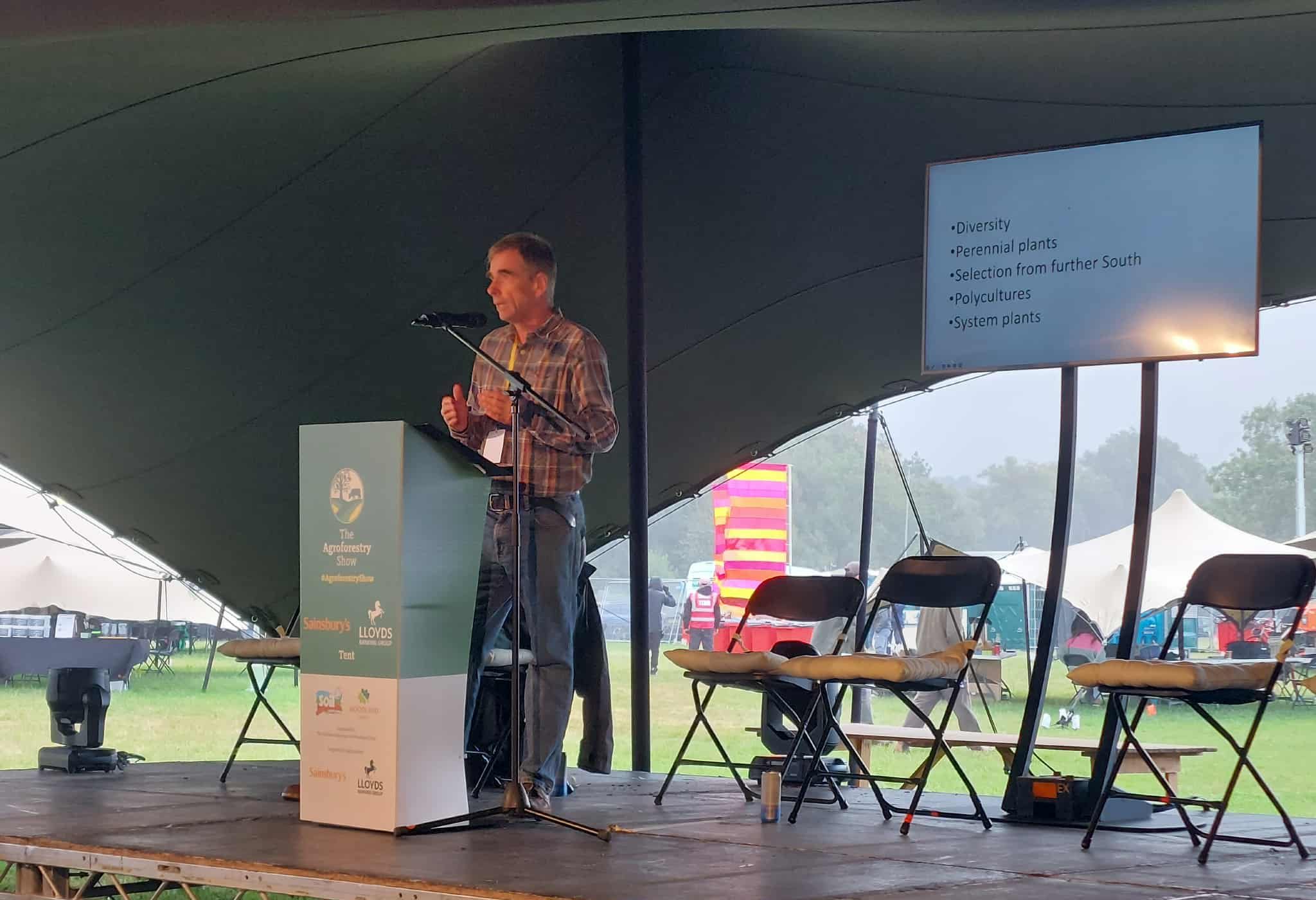
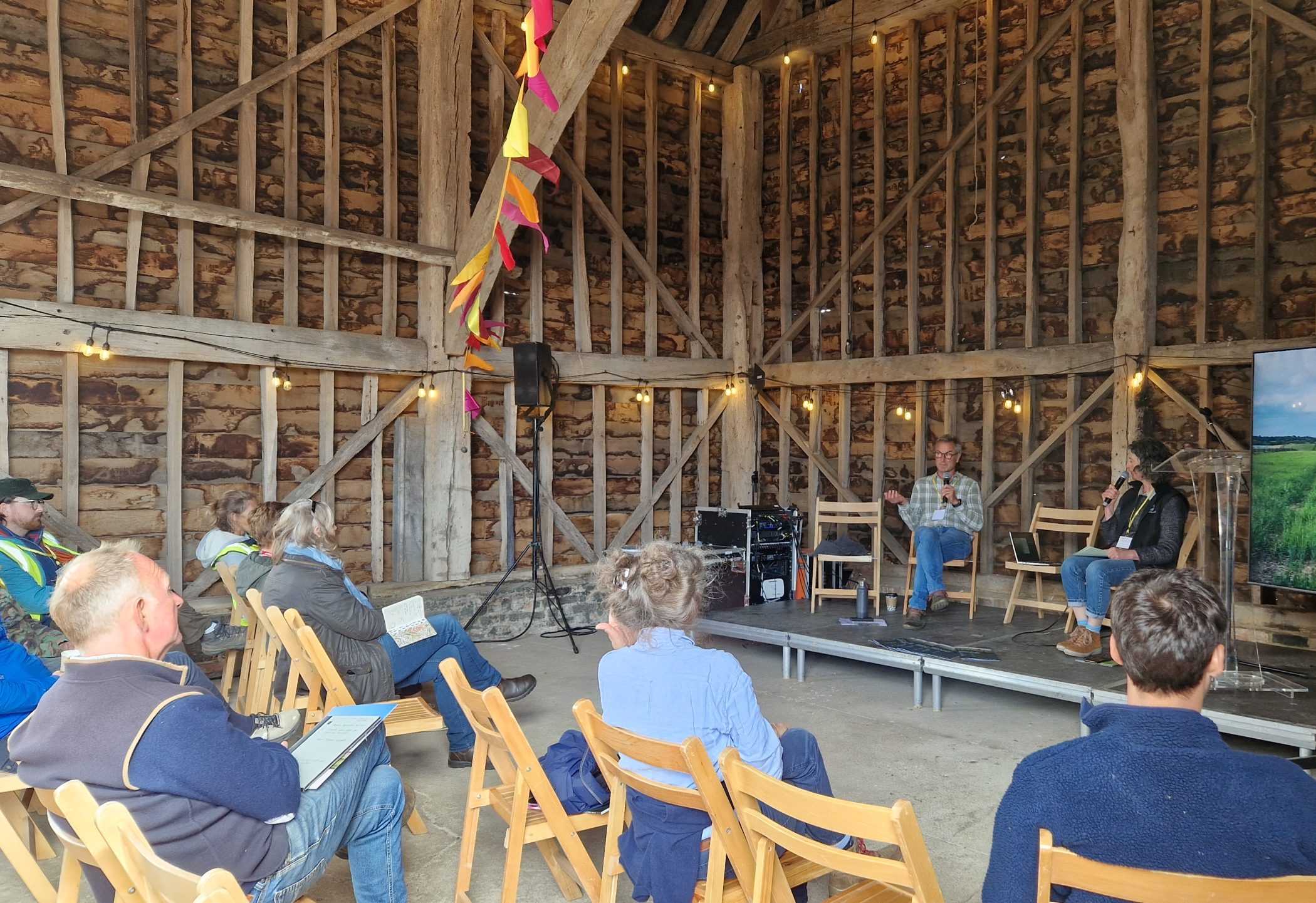
Diversification is important within tree rows (something very much demonstrated by farmer James Bucher in his recently planted 13-ha silvoarable plot that attendees were able to hear more about on the second day of the show). Make sure you incorporate both system and timber trees such as hybrid walnuts. It is also important to diversify downwards – look at the ground beneath and between trees – fruit bushes such as gooseberries and red currants can provide crops and are shade tolerant. Some lesser-known fruits are becoming more possible to grow in the UK i.e. pineapple and guava, then there are apricots, figs, goji berries, walnuts, hazels, heartnuts, pecans, almonds… Shoot crops can also help supplement our diets i.e. hops, hostas, bamboo shoots… A lot are shade tolerant and can grow under trees. Always make sure you consider the need for adequate pollination between different trees. With silvopasture, diversification is not quite as simple, some of the bigger nut species i.e. sweet chestnut, provide a lot of shade and cool temperatures, but every tree needs protecting from animal grazing and tree protection can be costly.
Forest gardens or food forests are complex and diverse systems based on natural ecosystems. While not primarily for selling crops, there are lots of potential economic outputs from food forests. Research suggests forest gardens can feed 6 people per ha. Martin relayed that larger sized food forests are being set up in Holland with more commercial aims – simplifying to an extent to make them more economic. More mainstream farmers are starting to plant food forests, so it is possible!
As also mentioned by Lindsay Whistance, trees can be seen as vegetables through providing leaf crops which can be hugely more nutritional than our widely grown annual veggies – examples being vine and mulberry leaves. White mulberry leaves contain more protein than any other tree and are widely used for food and fodder in other parts of the world. Food forests can also provide woody products i.e. mushrooms on logs, and offer high carbon storage potential and wildlife value.
With diversification comes resilience and a self-sustaining system. Utilising natural systems can save us work, time and money… However, diversification also brings complexity – both in design and implementation. Martin proffered that if you want a more diverse and resilient system, you have to embrace complexity. The cost of setup can be significant for more diverse systems, maintenance issues can be more costly and time consuming, wildlife can also be pests, and you need to find buyers for perennial crops – how do you get those customers? Martin strongly believes that we have no choice but to take action if we want our farms and businesses to survive. There are risks with whatever we do and doing nothing is not an option.
Learning from the experts
Megan Gimber (PTES) entertained the audience on the second day with her talk on hedgerows, her knowledge, passion and enthusiasm for this topic was infectious. She described hedges as “the original agroforestry!”, explaining how correctly managed hedgerows can extend the grazing season, reduce evapotranspiration, boost biodiversity, and support natural pest control by offering habitat for predators and parasites. Deep roots improve water infiltration and minimise run-off (thus reducing soil erosion and river pollution), while the carbon storage potential of hedges can be greater per hectare than that of forests!
Megan stated that only 50% of hedgerows in the UK are currently in “good” condition. Cutting every year or letting them go unmanaged both cause decline. Instead, Megan advocated for developing a management plan including a cycle of rotational trimming, that allows hedgerows to blossom naturally while keeping size in check.
Paul Jackson and Will Simonson’s session on agro-silvoculture, shared some brilliant insights from Paul’s long career including two decades as principal arborist at Wakelyns Agroforestry. Paul argued persuasively for pollarding over coppicing to support long-term tree health, biodiversity and productivity, drawing on the work of Ted Green amongst others.
Thoughout the duration of the Show Agricology’s guest podcast host Wallace Currie busily recorded interviews for Agricology’s new podcast season, Agroforestry Through the Elements over the course of the two days. The diverse range of guests, including Vicki Hird, Helen Browning, Andy Dibben and Martin Crawford, all contributed valuable insights. Stay tuned for the new season being released in the next couple of months!
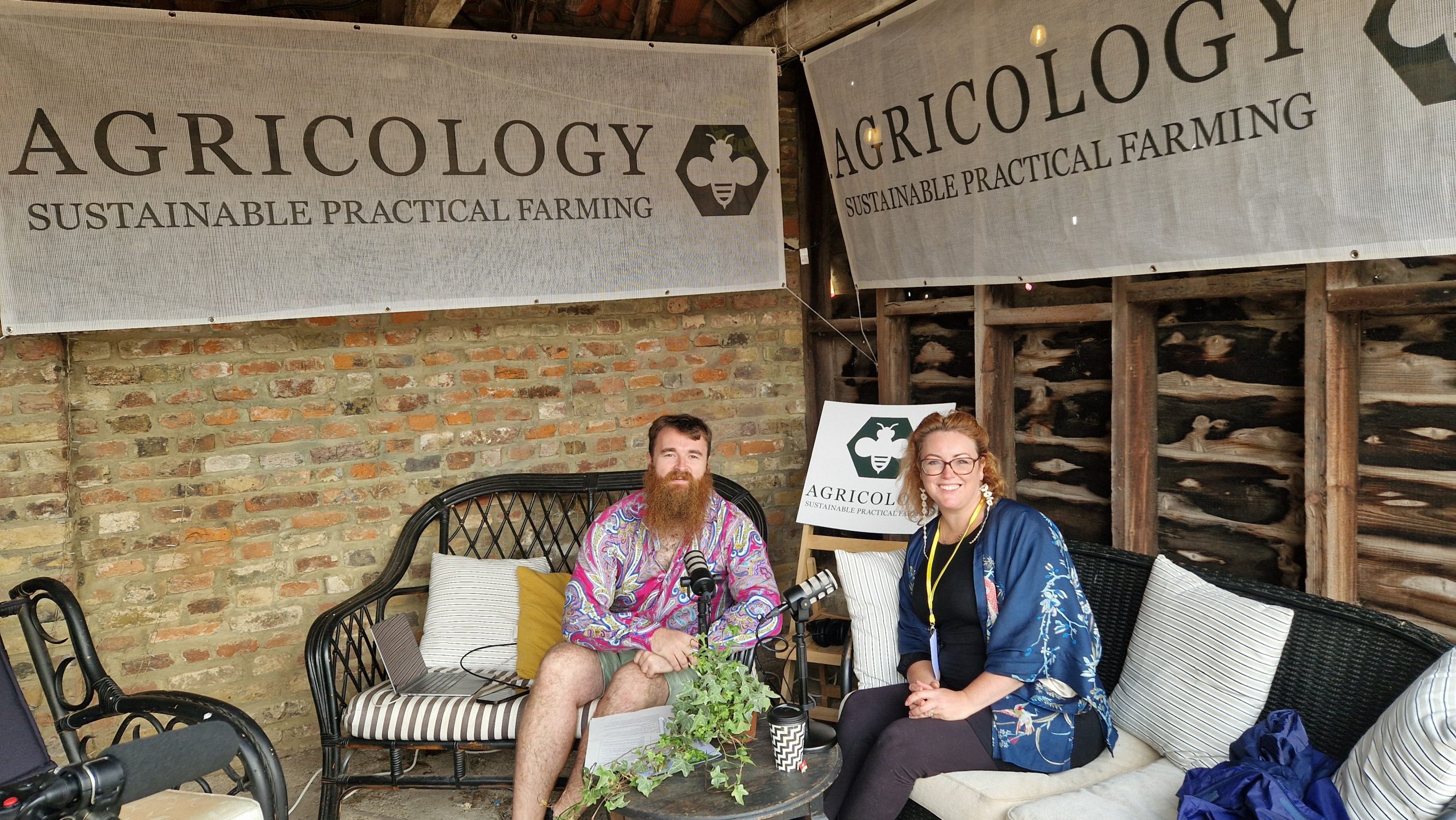
Reflections
The Agroforestry Show succeeded in bringing people together from across the entire farming spectrum to address 21st century issues, by blending traditional land management practices and a respect for cultural heritage with cutting-edge research, digital tools and modern innovation. It demonstrated that agroforestry is no longer a niche interest, but a central part of conversations about the future of farming.
The message delivered through the coming together of people, experience and knowledge at the show amplified some of Martin Crawford’s sage words; survival requires adaption, risk is everywhere, the past climate no longer guides the future, and action is urgent.
